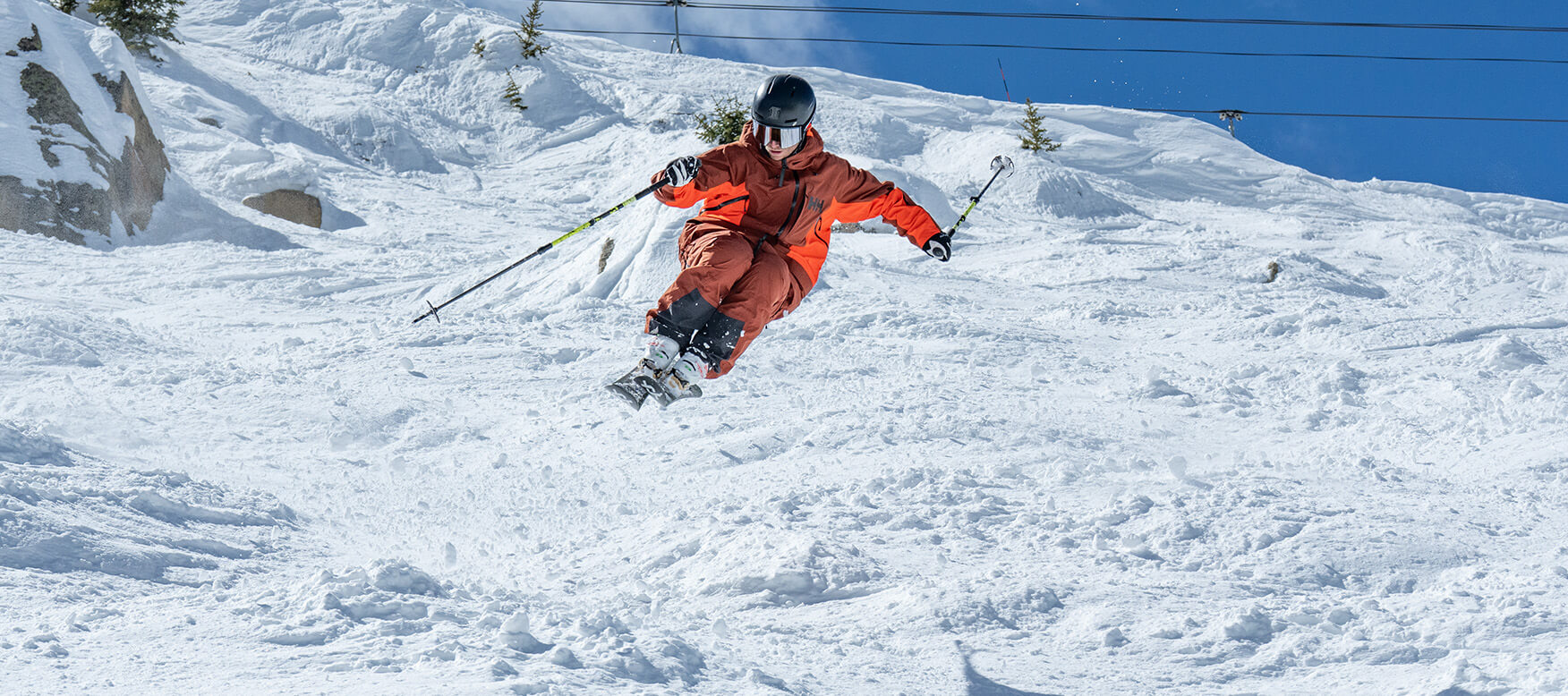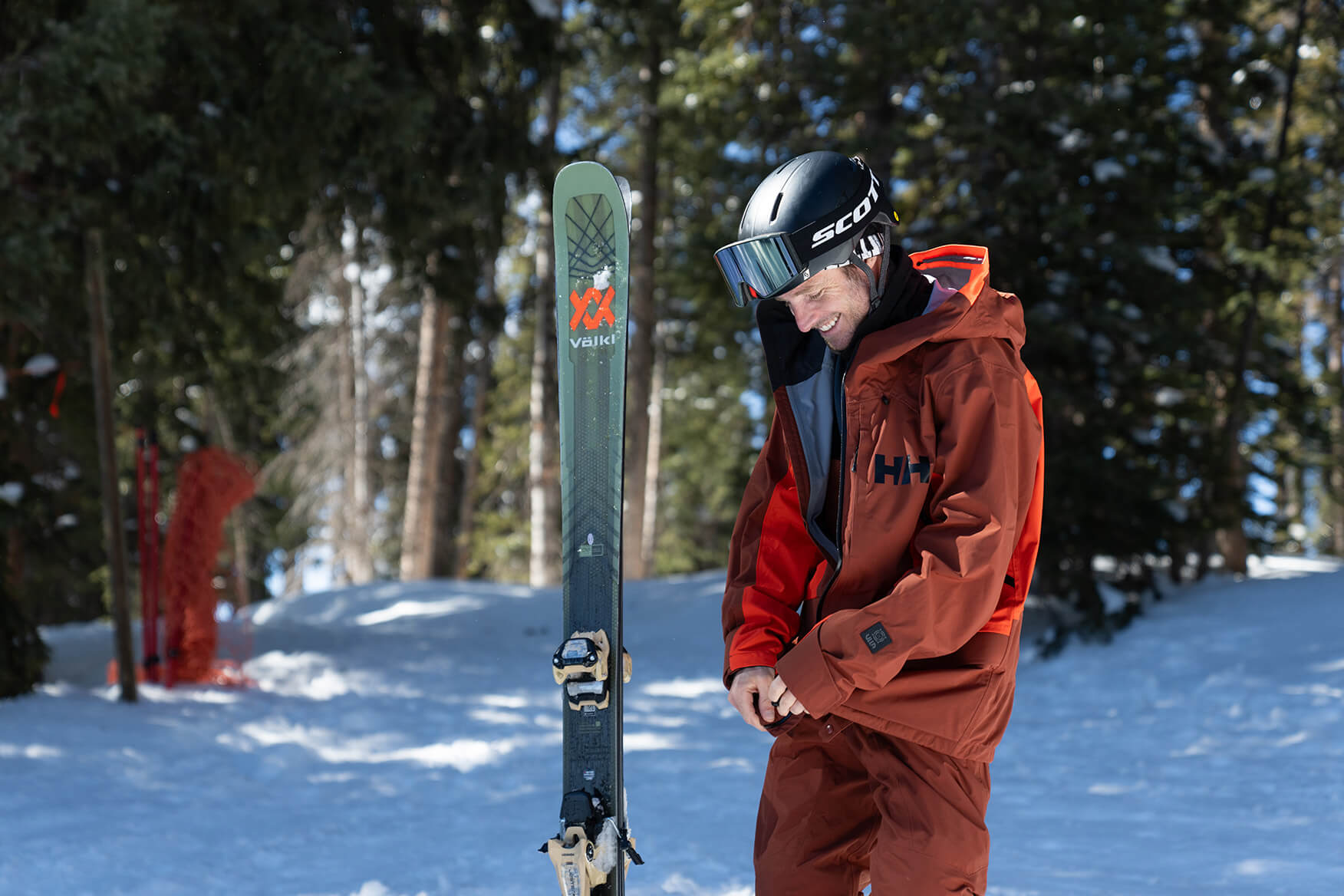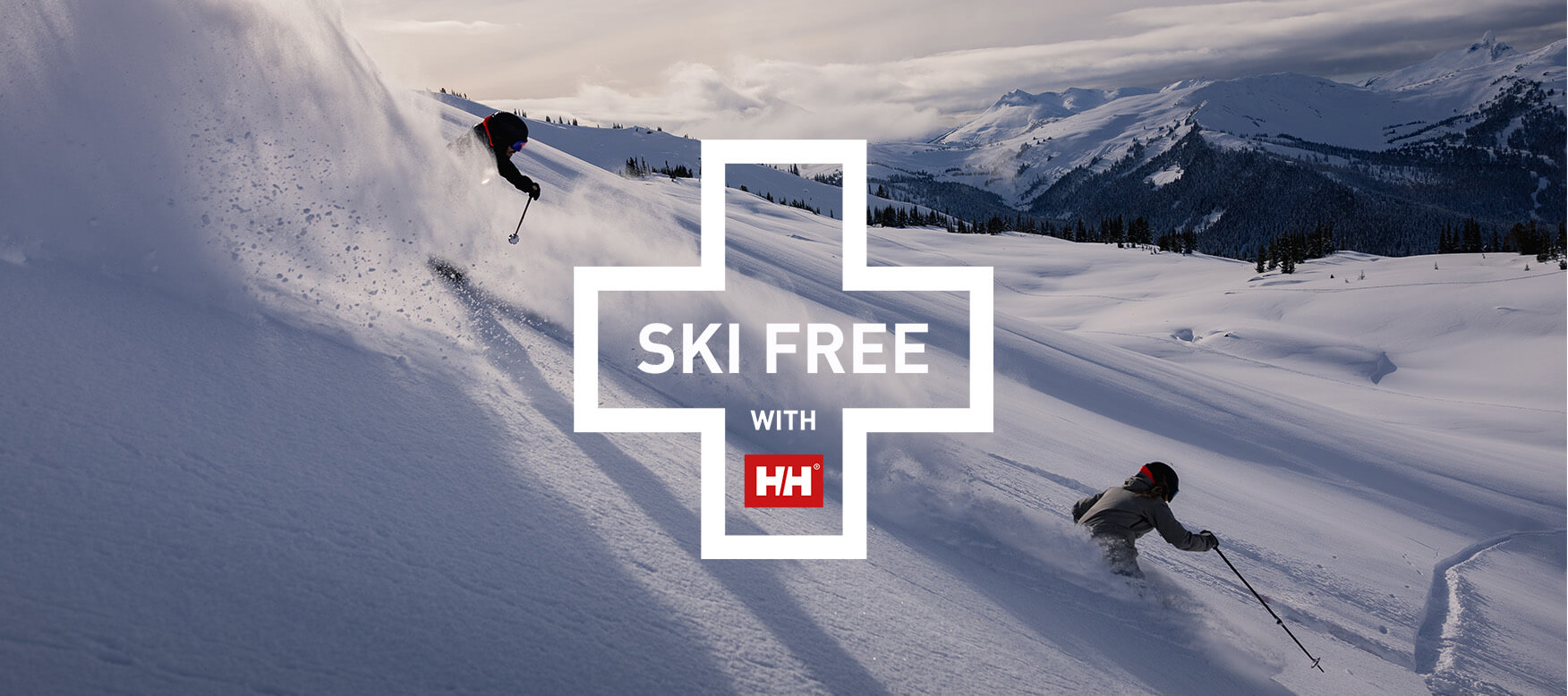
Community and adventure
An interview with professional freeride skier Jim Ryan
October 04, 2024
4 min read
Professional freeride skier Jim Ryan discusses his love for resort skiing, the importance of community on the slopes, balancing safety with thrill, and how high-quality gear enhances his backcountry experiences.
What do you enjoy most about skiing at resorts?
I love skiing at the resort because it’s where I connect with my friends and the larger ski community. It’s where I get most of my socialization during the week. Being with a big group, hooting and hollering down the slopes, is incredible. Skiing together is almost like a conversation—someone leads, tries a new trick, or takes a new line, and the rest of us are inspired to follow or put our spin on it. Its self-expression combined with camaraderie makes it so unique for me.
Do you prefer skiing alone or with others?
I ski almost always with others. I don’t really like to ski alone, maybe once or twice a year at most. Being around other skiers, especially those who are better than me, energizes and inspires me. Watching them move and trying to replicate their lines or tricks helps me improve my own skills. For me, skiing is all about sharing the experience with people.
How do you balance resort skiing with backcountry adventures?
I probably spend about 60 days a year at resorts and around 50 days in the backcountry. While most of my filmed content is in the backcountry, I still get more days at the resort. Places like Jackson Hole offer the best of both worlds—you can take a tram up and then head out of bounds, accessing side-country terrain that feels remote but is still lift-accessed. It’s different from being deep in the backcountry because you’re not as isolated and can still run into people.
How do you approach safety in both environments?
In resorts, especially in North America, I consider the environment to be more controlled, so I don’t think about safety as much. Of course, I ski responsibly and with people who can handle themselves. But in the backcountry, safety is a constant concern. Avalanches are a significant risk; you must be prepared with the right gear and knowledge. The unpredictability of the mountain requires you to be constantly aware.

What are your thoughts on the differences between North American and European ski resorts?
In North America, resorts are highly controlled, with clear markings and patrols managing avalanche risks. Terrain changes are well-marked, and you can generally count on consistent conditions. In Europe, the boundaries between controlled and uncontrolled areas aren’t always as clear, so you ski with more self-responsibility. It’s a different mindset. You must be more prepared and can’t rely as much on the resort to manage hazards.
How do you view ski patrols in your skiing experience?
I greatly respect ski patrollers; they are crucial in keeping the mountain safe. However, there’s still a part of me from when I was younger that gets a bit anxious when I see a patroller, wondering if I’ve made a mistake or done something wrong. But overall, I appreciate their work and rely on them to be there in case of an accident.
How important is high-quality gear in your skiing?
High-quality gear becomes essential when tackling challenging terrain or venturing into remote areas. In easy conditions, you might get away with basic gear, but when you’re in the backcountry or pushing your limits, you rely on your equipment not just for performance but for safety. The further you are from help, the more you need gear that won’t let you down.
Technologies like lightweight, breathable, and waterproof materials make a significant difference. They allow me to carry essential items without adding too much weight, which is crucial for long days in the backcountry.
Have you contributed to gear development or provided feedback on equipment?
Yes, I provide input on gear, especially after spending extended periods using it in various conditions. When you rely on gear in extreme situations, you develop strong opinions about what works and what doesn’t. Sharing that feedback helps manufacturers improve their products, benefiting everyone who uses them.
How has your skiing evolved over the years?
I ski more now than I did when I was a racer. Back then, skiing was more structured with specific training and racing schedules. Now, as a professional skier, there’s so much more to explore and master. The possibilities are endless—whether it’s venturing into new terrain, learning different techniques, or traveling to ski in other parts of the world. That constant evolution keeps me passionate about the sport.
What role does technology like breathable waterproof membranes play in your skiing?
Technologies like breathable waterproof membranes are game-changers. They keep you dry while allowing sweat to escape, which is essential when you’re exerting yourself in the backcountry. Good gear lets you stay out longer and remain comfortable, allowing you to focus on the experience rather than worrying about the elements. It’s essential because if the gear is too heavy or doesn’t perform well, I might choose not to bring it, which could compromise safety.
To keep up with Jim on all his adventures, you can follow him on Instagram: @jimmiryan
THE BEST DEAL IN SKIING?
Get a day of skiing in one of over 50 premiere resorts in Europe and North America when you buy a ski jacket or pant from the latest Helly Hansen ski collection.


Find the right gear
Here we help you find the right ski clothing for you, get tips from our pros, and get inspired for epic days ahead.